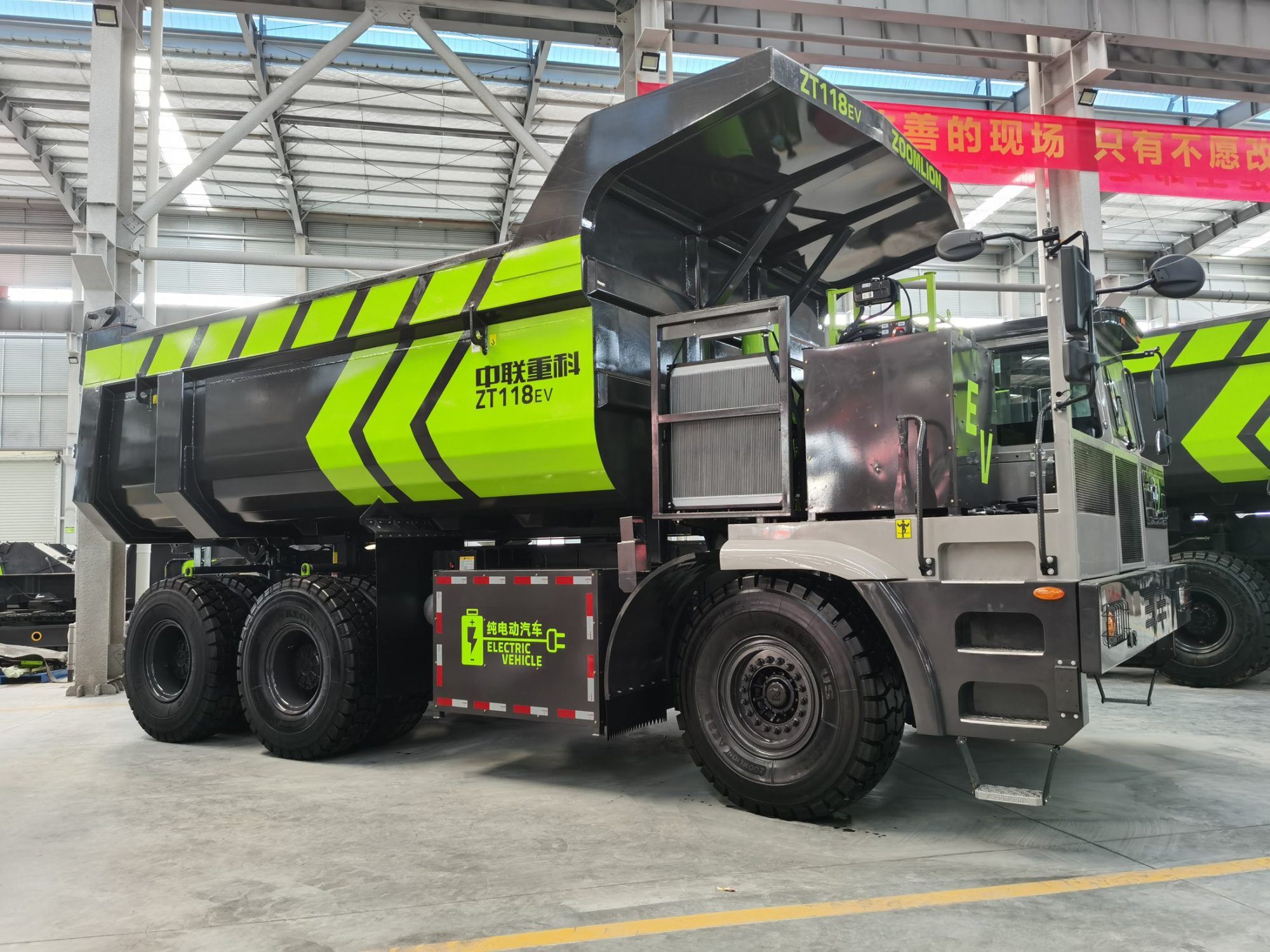Recently, China’s ZOOMLION held an event to launch its new mining machinery lineup at its factory in Ningxiang, Hunan Province including 32 different equipment models including mining trucks, mobile crushers and excavators. It also reported that it obtained strategic cooperation intention with a total value of more than 2 billion yuan.
ZOOMLION states: “In recent years, with the increasingly stringent requirements of national policies on the mining industry, and the increasing demand for intelligent, large-scale and complete sets of equipment in the mining industry, the structure of the mining machinery industry is undergoing a new adjustment. Zoomlion is decisively following the development trend of the industry, applying cutting-edge technologies such as industrial IoT and Big Data, and continues to make efforts in smart, digital and green products.”
Among the new products, the 72 t payload wide body ZT118EV is currently one of the largest Chinese all electric mining dump trucks and comes after the conventional diesel ZT118 model was launched at Bauma China in November 2020. “This model is equipped with advanced tri-industry electrical system, and equipped with a large power lithium iron phosphate battery with a total capacity of 525 kWh.It has strong power and long cruising range, which can meet the needs of complex working conditions in the mining area. At present, pure electric dump trucks are mainly used to transport materials under heavy gradient conditions such as cement, sand and gravel building materials. Under the same working conditions, they can save energy by 60%-80%, which greatly reduces the use cost while meeting the requirements of China’s dual carbon target.”
ZOOMLION also offers a hybrid version, the ZT118HEV, which adopts a range-extended hybrid strategy and is equipped with a diesel engine and a battery pack to ensure that the engine is always working in a high-efficiency area while also recovering braking energy. Some 20%-30% of fuel can be saved under working conditions. While ensuring production efficiency, the energy-saving effect is still very prominent.











